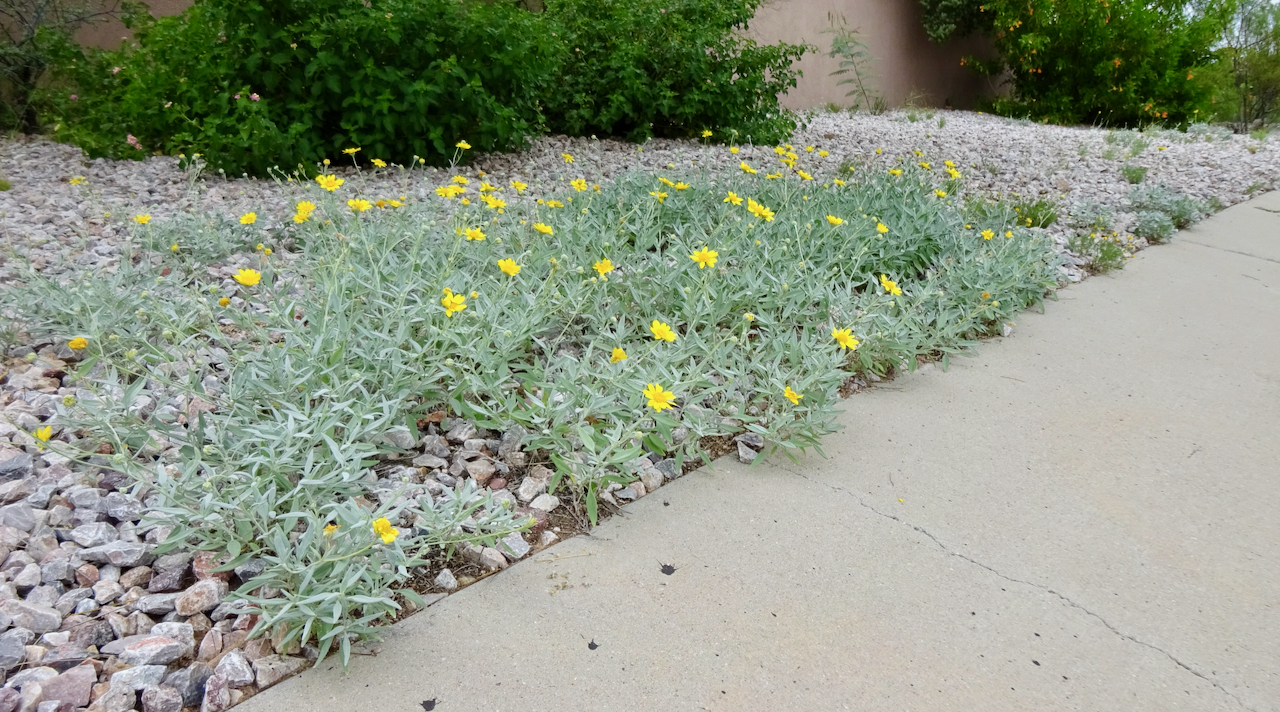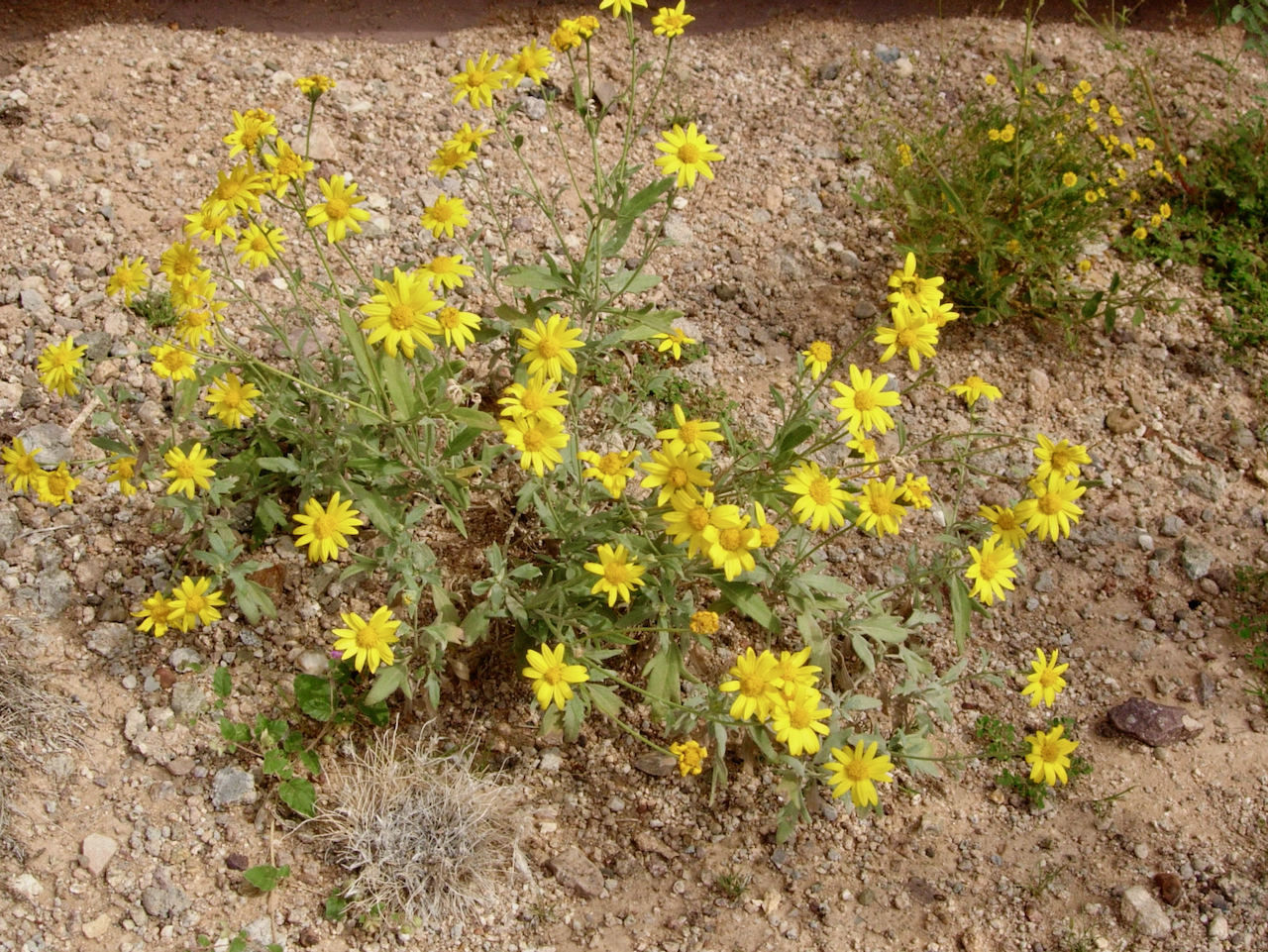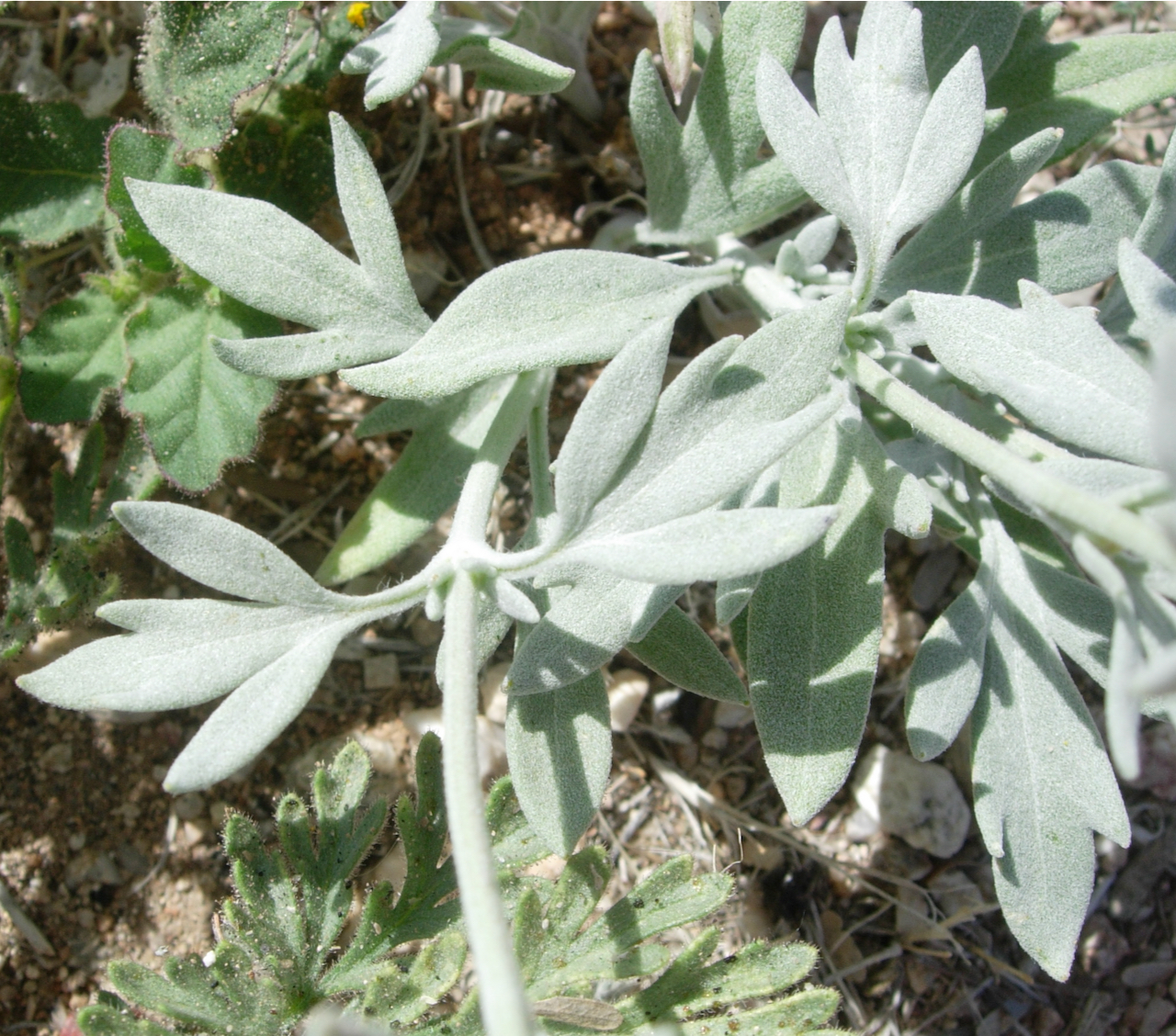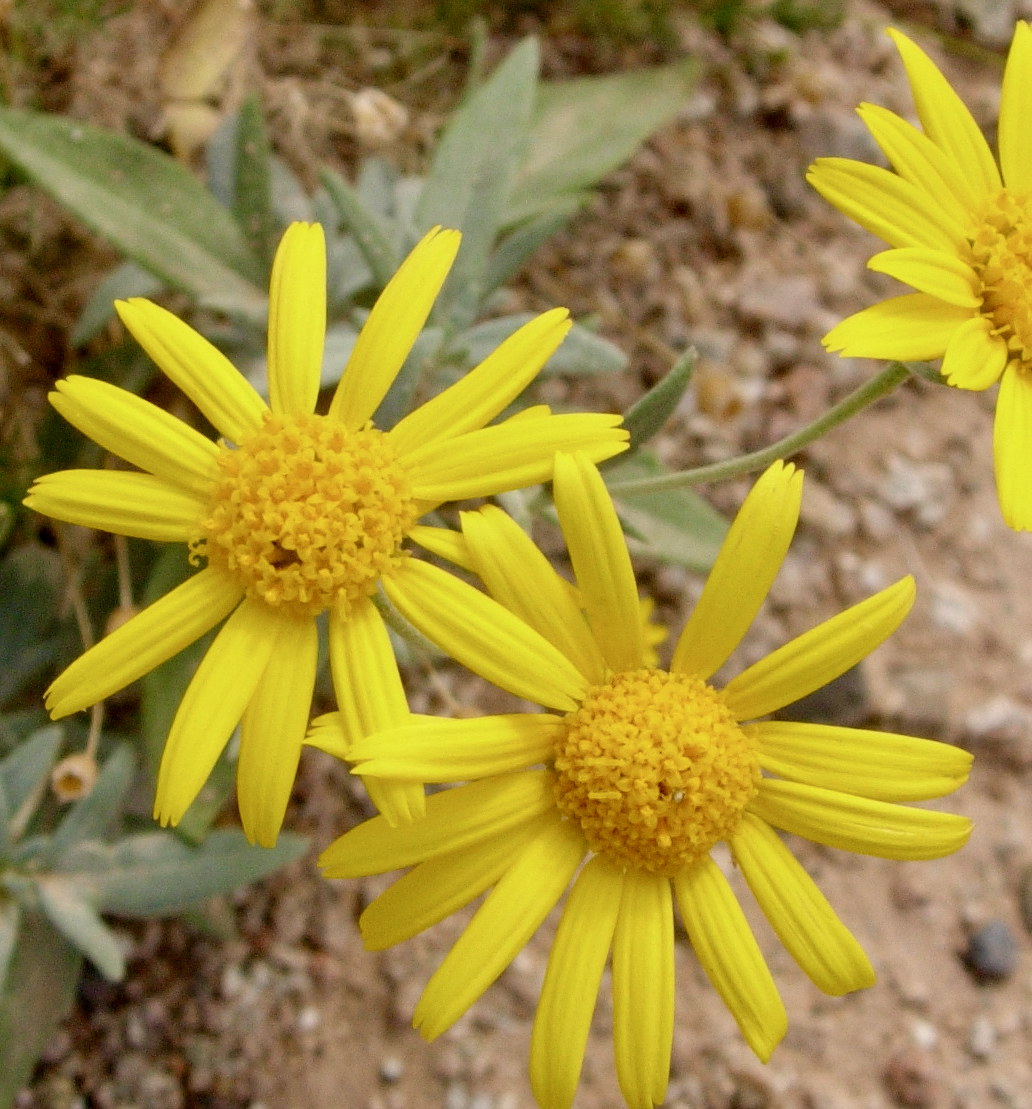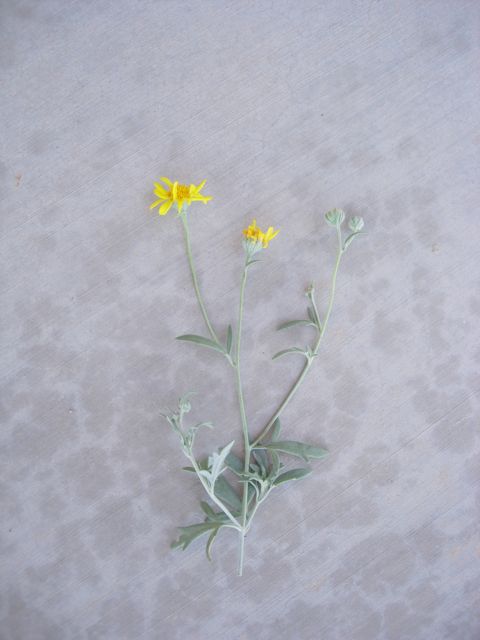Bahia, hairyseed bahia
Bahia absinthifolia
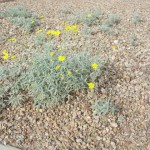
About the Plant
Bahia is a long-blooming, low-growing perennial with yellow flowers. This native grows to about a foot and spreads just as wide.
Plants growing close to each other can form a pleasant groundcover. Yellow flowers appear in spring and fall, irrigation can extend the bloom season.
Bahia survives without help and on natural rainfall in the wild. In a cultivated situation, cut back dead stems at the end of the season and irrigation occasionally to encourage flowering. New plants volunteer readily.
Notes: bahia and desert marigold may look similar at first glance. This Weekly Plant shows how to tell the two plants apart.
Wildlife value: goldfinches will eat the seeds and butterflies will sip nectar from the flowers.
More Information
Weekly Plant on desert marigold and bahia
Technical botanical description from SEINet
In books:
Native Plants for Southwestern Landscapes by Judy Mielke, page 87
